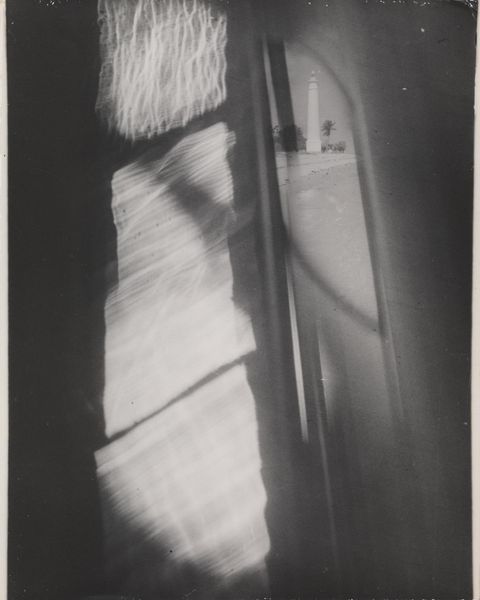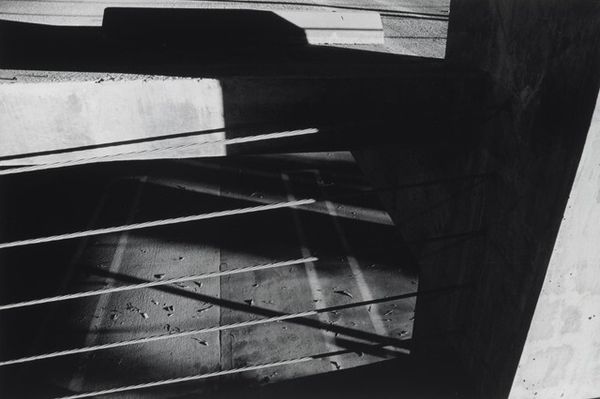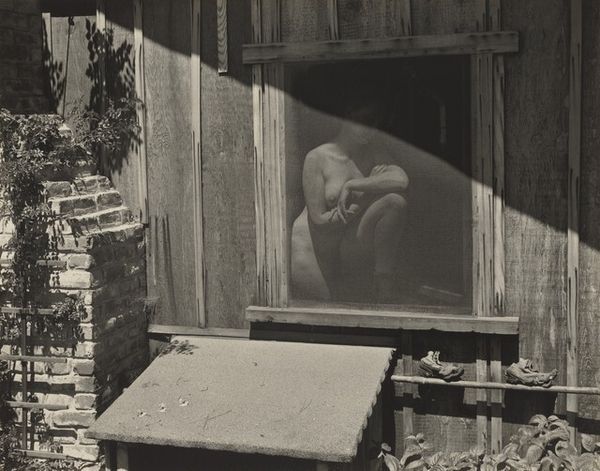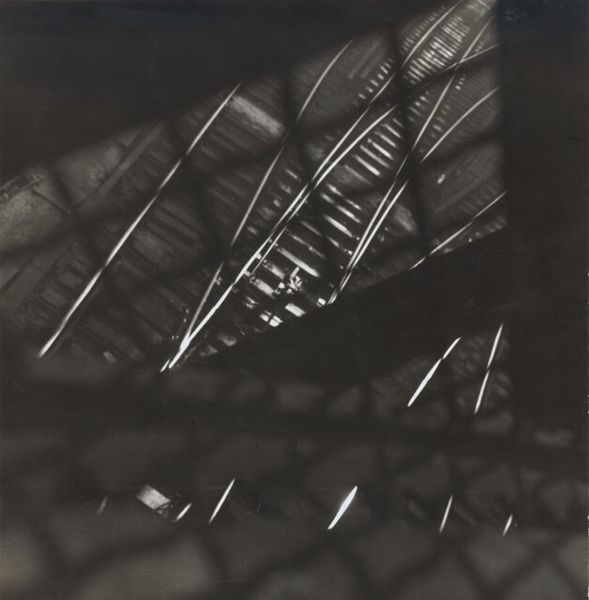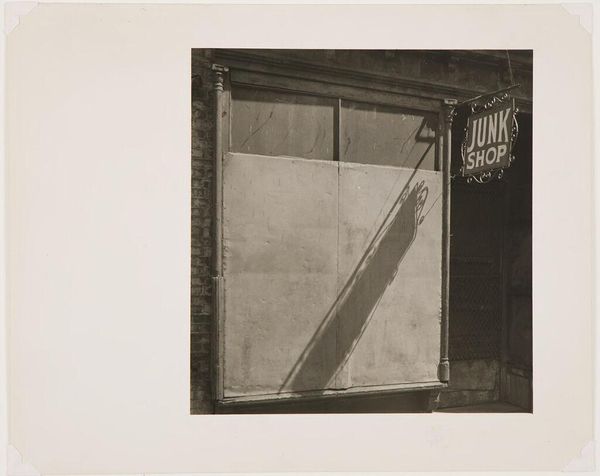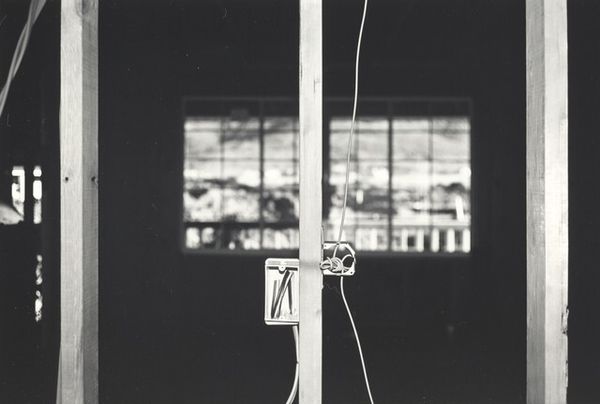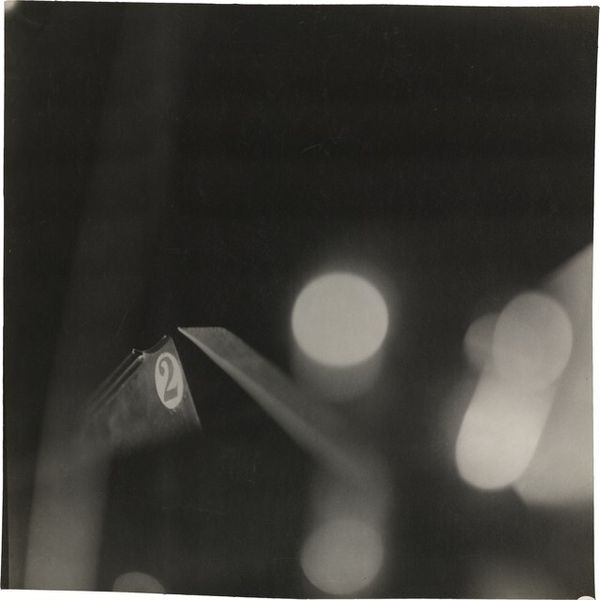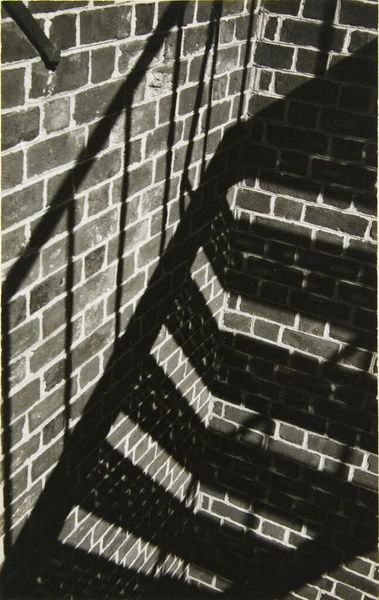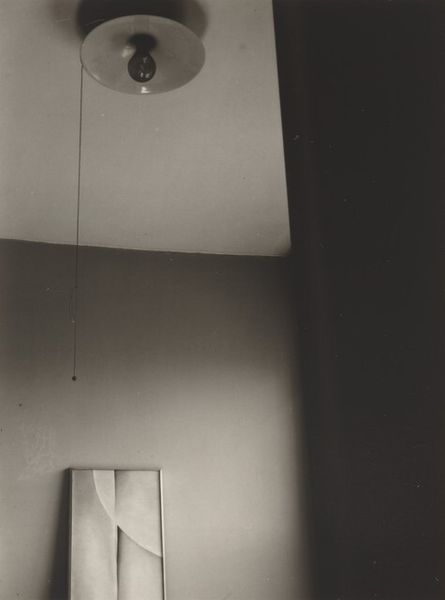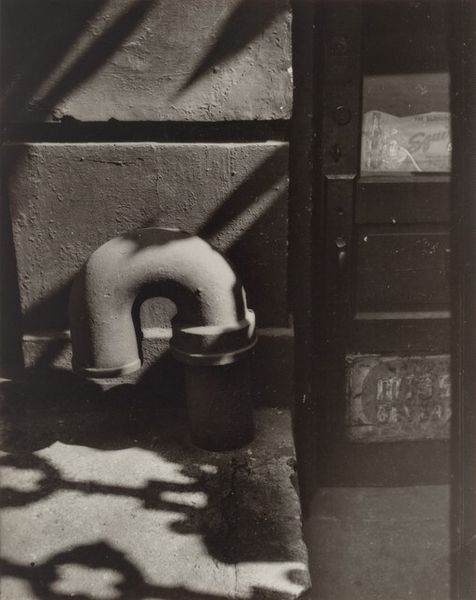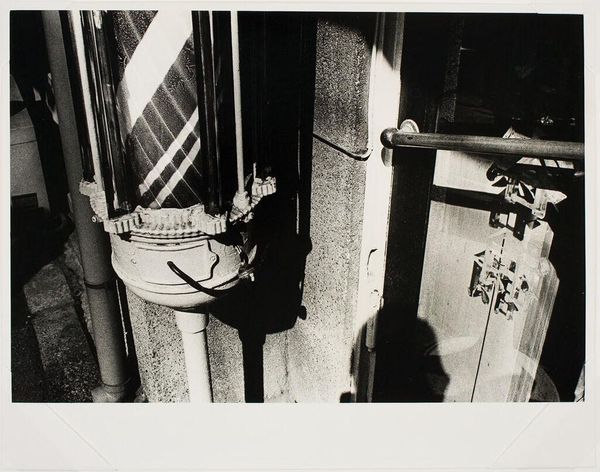
photography
#
black and white photography
#
sculpture
#
street-photography
#
photography
#
geometric
#
black and white
#
monochrome photography
#
monochrome
#
realism
#
monochrome
Dimensions: overall: 30.8 x 23.8 cm (12 1/8 x 9 3/8 in.)
Copyright: National Gallery of Art: CC0 1.0
Editor: We’re looking at Imre Kinszki’s "Shadows in Office," a photograph, likely silver gelatin print, from between 1921 and 1939. The high contrast and strong diagonal lines create a striking composition; the geometry is mesmerizing. What’s your interpretation of this photograph? Curator: It’s compelling how Kinszki transforms an ordinary office space into something abstract, almost theatrical. Remember, this was a period of immense socio-political change, especially with the rise of industrialization and increasing mechanization of labor. How do you think that might inform this image? Editor: Well, I guess I hadn’t thought about the "office" aspect that deeply. I was focused on the geometric shapes. But thinking about the title... perhaps these sharp lines and rigid structures reflect a certain dehumanization within the workplace? Curator: Precisely! The harsh contrast and deep shadows might symbolize the oppressive aspects of work during that time, especially with economic pressures leading to exploitation and longer working hours. Kinszki isn't just documenting a space, he's presenting a commentary. The way shadows are almost cage-like is potent. Do you think this image could relate to debates on modern architecture, potentially dehumanizing environments or standardization of labor? Editor: Yes, definitely. The repetition of those horizontal lines feels very impersonal, almost like the architecture itself is imposing control. It is hard to ignore! Curator: Consider the public role of photography during that period too; photography offered an easily accessible form to communicate subtle, poignant commentary and affect political awareness. This image engages in that visual rhetoric. Editor: I learned a lot. Now I understand how socio-political conditions profoundly influence what an artist chooses to represent and the message they’re trying to convey! Curator: Absolutely. And how that simple geometry actually speaks volumes. Always question how socio-cultural factors weave their way into visual arts; that is one powerful skill we learn when visiting galleries and museums!
Comments
No comments
Be the first to comment and join the conversation on the ultimate creative platform.
